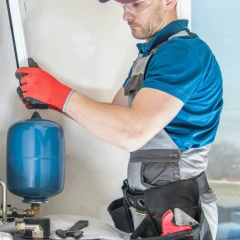













If you’re looking to start or grow an HVAC business in California, getting licensed isn’t optional — it’s legally required. Whether you’re installing new systems, handling refrigerants, or servicing heating and cooling units, the state enforces clear rules to protect consumers and hold contractors accountable.
This guide walks you through exactly what you need to know to get licensed as an HVAC contractor in California.
In California, anyone performing HVAC work valued at $500 or more in labor and materials must have a license issued by the Contractors State License Board (CSLB). This includes:
Unlicensed work over $500 is illegal and can result in fines or criminal penalties.
HVAC professionals must obtain the C-20 Warm-Air Heating, Ventilating and Air-Conditioning Contractor license.
This license allows you to:
It does not authorize you to perform plumbing, electrical, or solar panel work unless you hold additional classifications.
To qualify for the C-20 license, you must:
If you’re short on experience, you may still apply with a qualified person (like a Responsible Managing Employee or Officer) to represent your experience.
California requires two exams:
Both exams are multiple-choice and computer-based. CSLB provides study guides and sample questions.
Here’s what you can expect to pay:
Total initial costs usually range from $700 to $1,500, depending on your needs and prep.
HVAC licenses are valid for 2 years. To renew, you must:
No additional testing is required for renewal.
Operating as an HVAC technician in California without a C-20 license is a misdemeanor offense. Penalties may include:
If you advertise as licensed without being licensed, the CSLB may issue additional penalties.
Getting licensed does more than check a legal box — it:
For anyone looking to run a legitimate, long-term HVAC business in California, licensing is the foundation.
This guide is for general informational purposes only and is not legal or licensing advice. Requirements, fees, and regulations are subject to change by the California Contractors State License Board (CSLB) or other authorities. Always verify current rules and procedures directly with the CSLB or a qualified licensing professional before making business or licensing decisions.
